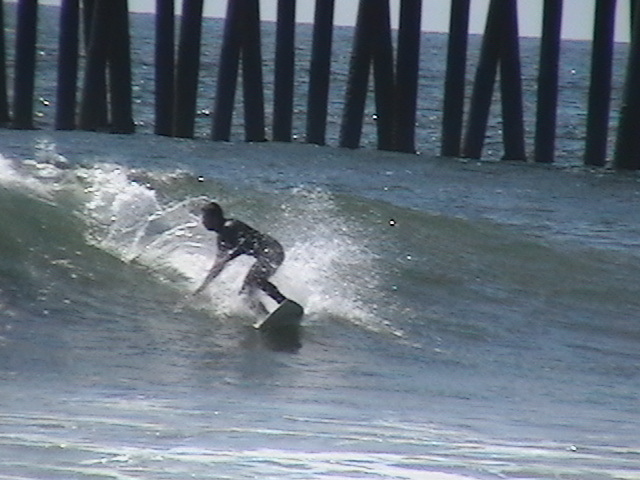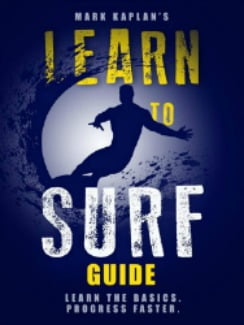Wave Catching for Beginner and Intermediate Surfers
Wave catching for beginner and intermediate surfers is the essence of progress. First has to be mastering the basic fundamentals of rolling over on the surfboard and paddling the surfboard level and straight to the beach. Then the pop up must be mastered or no waves will be ridden.
Beginners surfers start with catching foam waves. They are standing in waist deep water waiting for the wave to arrive and then when they see a straight bead of white foam approaching, roll over when it is 20′ away and start paddling easy. As it is about to hit the surfboard, they paddle hard for three or four times until the surfboard takes off in the wave.

The Essentials of Catching Waves
Surfing is about timing and rhythm. Each move is part of a sequence. It may look in film as one easy event, but each event requires timing. In catching foam waves, the surfer waits until the wave is close and paddles until the surfboard has taken off on the wave. The same essentially cccurs with real waves. The surfer spots the new wave forming and then gets in position.
In real waves, the surfer on a short board wants the wave to roll under the surfboard. As the wave peaks above his head, he paddles hard three times and pops up. On a long board the take off can be much sooner because the board moves with less steepness by design. Long boards are usually better on reefs because the waves have better shape. On sand bar beaches like Oceanside, CA, the waves are steeper and more challenging for long boarders to ride down the face.
Both short boarders and long boarders can push the nose towards the pocket before popping up and prevent down the face pearling (nose under water). This gets surfers ahead of the falling lip quicker and into the pocket for maneuvers and tricks.
Both boards can also be steered into the corners which is further down from where the wave apexes. At this point the wave is not steep and not as fast. Here the surfer is pointed at 45 degree angle towards the beach as the wave rolls under the surfboard. The entry to the wave pocket is much easier. Advanced surfers rarely catch corners unless the wave faces are impossible. But they are great spots for intermediates to learn how to catch waves and ride the pocket.
Learn More
For surf lessons in Oceanside, see the Home Page
My New Surfing Course in an E-Book plus Demo Video or Audio Version
Get the 18 Chapter, 7,500 word Course that can prepare you for a lesson or give you the fundamentals if you are going to try it on your own. 10 years of teaching 350 students a year has given me the insights on the most precise measures you must follow for success. This course is what I teach on the dry land and in water instruction. The Course includes a 15 minute video on my dry land and in water demonstration. Only $4.95
Buy the E-Book and start learning $2.99. Learn to Surf
Buy the Paperback on Amazon $7.95
Get Learn to Surf Course in 29 minute AUDIO. Great prep for a lesson, reviewing after a lesson, learning on your own, refreshing after not having surfed for a while. See Table of Contents. Only $7.95.

For Oceanside Surf Lessons, see the Home Page
See the Post Search Lessons Teach Fundamentals
See the Post Catching Real Surf Waves
See my Dry Land and in Water Demo video
See my other Surf site for more Posts
I have lowered the price of Courses and Books for the lock down price of $2.99
80 page Learn to Surf Book
![Surf Instructions Beginner to Advanced: Learn to Ride Waves by [Kaplan, Mark]](https://images-na.ssl-images-amazon.com/images/I/51HswFtoBQL.jpg)